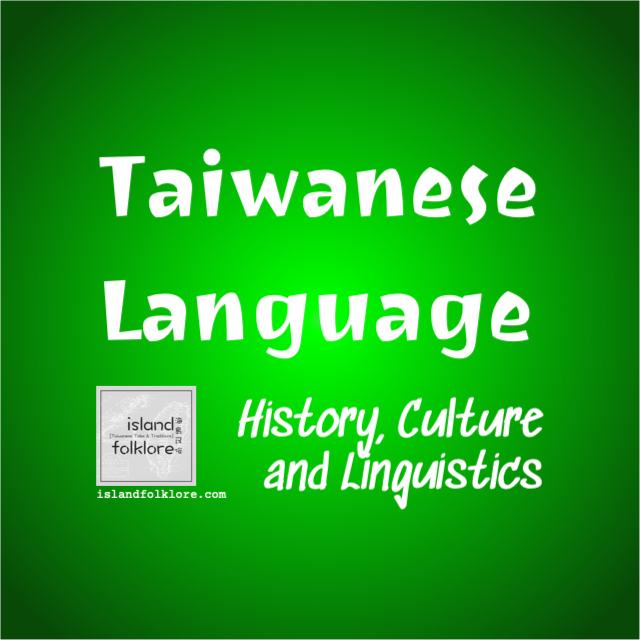Taiwanese society is comprised of indigenous Austronesian (Formosan) nations and Sinitic (Han) groups. The former mainly inhabit the highlands and mountains in central and eastern Taiwan while the latter occupy Taiwan’s western lowland plains. In pre-modern times, the plains were also home to indigenous kingdoms, but centuries of intermarriage with Han settlers have greatly transformed the demographics and culture of western Taiwan. Below, we explore Taiwan’s Austronesian and Sinitic cultures and communities.

Taiwan’s Austronesian Highlands
Indigenous Taiwanese Nations (Austronesian Speakers)
- Amis・阿美族
- Atayal・泰雅族
- Bunun・布農族
- Kanakanavu・卡那卡那富族
- Kavalan・噶瑪蘭族
- Paiwan・排灣族
- Puyuma・卑南族
- Rukai・魯凱族
- Saaroa・沙阿魯阿族
- Saisiyat・賽夏族
- Sakizaya・撒奇萊雅族
- Seediq・賽德克族
- Thao・邵族
- Truku・太魯閣族
- Tsou・鄒族
- Yami・雅美族

The Austronesians are a family of diverse ethnolinguistic groups and highly successful seafarers. They arose in Taiwan thousands of years ago and spread throughout the Pacific and Indian Oceans.
“Austronesia” stretches from Taiwan south through the Philippine and Malay archipelagos. It also encompasses the Pacific Polynesian islands, including Hawaii, New Zealand and Easter Island. In the Indian Ocean, the Malagasy people of Madagascar are also members of the vast Austronesian family.

Austronesians in Taiwan are known by many names. Linguists and anthropologists call them Formosans. But most commonly, the Taiwanese call them yuánzhùmín, or “original inhabitants.” Historically they have also been called shāndìrén, or “mountain people,” since most of Taiwan’s indigenous nations today reside in mountainous regions. This term, however, has come to be regarded as derogatory in recent decades and its use is in decline.
Taiwan’s indigenous nations are largely organized into diverse tribal bands. 16 of these groups have official recognition from the Taiwanese government. Among them, the Amis people of eastern Taiwan are the most numerous, with over 200,000 members. Smaller groups like the Saisiyat and the Kanakanavu number a few thousand or less.
Today, though Taiwan’s indigenous nations form only two percent of the island’s total population, they continue to dominate the mountainous highlands of central and eastern Taiwan. And while a number of their extraordinarily diverse and ancient Austronesian languages are critically endangered, efforts are underway to preserve and revive this unique heritage of Taiwan.

Taiwan’s Sinitic Lowlands
Han Taiwanese Groups (Sinitic Speakers)
- Hoklo・閩南人
- Hakka・客家人
- Outlander・外省人
Taiwan’s western plains are home to speakers of Sinitic (Chinese) languages. Known as Hànzú or Hànrén (meaning “Han people”), they include several distinct groups tracing their lineage mainly to southern China. Han Taiwanese also include lowland indigenous tribes that adopted Han culture or intermarried with Han settlers. The highland tribes simply call Taiwan’s Han population píngdìrén, or “people of the plains.”
Han colonization of Taiwan began in the 1600s, initially under the Dutch East India Company (VOC). This bit of history is often surprising to people: Despite Taiwan’s proximity to the continent, the 5,000-year-old Chinese civilization showed very little interest in the island until the arrival of Europeans in the early modern period.
From 1624 to 1662, the Dutch colony recruited numerous Han settlers from southeastern China to work in Taiwan. The prospect of employment under the VOC attracted an influx of immigrants from the continent.
Hoklo and Hakka Taiwanese
Those 17th-century Han settlers consisted of two main groups: The Hoklo and Hakka peoples. The Hoklo (Hokkien speakers) originated in southern Fujian. They emigrated not only to Taiwan but throughout Southeast Asia, including places like Singapore, Malaysia and Indonesia.
The other main Han group, the Hakka people, who speak the Hakka language, originated in eastern Guangdong. The Hakkas have also historically formed communities in parts of India, Bangladesh and Southeast Asia.
Today, descendants of the Hoklo comprise 70 percent of Taiwan’s population. Being Taiwan’s most numerous ethnolinguistic group, they and their language—Taiwanese Hokkien—are usually referred to simply as “Taiwanese.” The group mainly lives in Taiwan’s fertile southwestern regions. On the other hand, Taiwan’s Hakkas are based mainly in hilly northwestern Taiwan. The Hakkas form Taiwan’s second-largest ethnolinguistic group at 15 percent of the population.

According to Taiwanese folk tradition, most lowlanders were born to “Chinese fathers and non-Chinese mothers” (有唐山公 無唐山媽). Taiwan’s early Han settlers were almost all men, recruited by the Dutch colony. They married native Austronesian women, creating hybrid Sino-Austronesian families, similar to the Métis and Mestizo peoples of Canada and Latin America. Recent genetic research led by Dr. Lîm Má-lī at Taipei’s Mackay Memorial Hospital appears to confirm this tradition.
Outlanders and Mainlanders
A final group of Chinese speakers forms about 13 percent of the island’s population. In English, they are called “mainlanders” (those originating from mainland China as opposed to diasporic Han communities overseas). On the island, they are better known as wàishěngrén, or “outlanders.”
This group arrived more recently in Taiwan as refugees in 1949, fleeing communism’s rise in China. They largely settled in the area around Taipei in northern Taiwan. This is a diverse group of people originating from all over China. They speak a wide variety of mutually unintelligible Chinese languages. Mandarin, introduced to Taiwan after WWII, serves as the primary lingua franca in this group.
Today’s Taiwan
The above are the main ethnolinguistic groups of the island. While these cultural, ethnic and linguistic divisions still have very real socioeconomic and political implications in Taiwanese society, the lines have begun to blur as the groups interact and mingle with one another. Today’s inter-group exchanges, no longer the violent confrontations of yore, are generally friendly and contribute to a sense of solidarity and unity among all Taiwanese.




